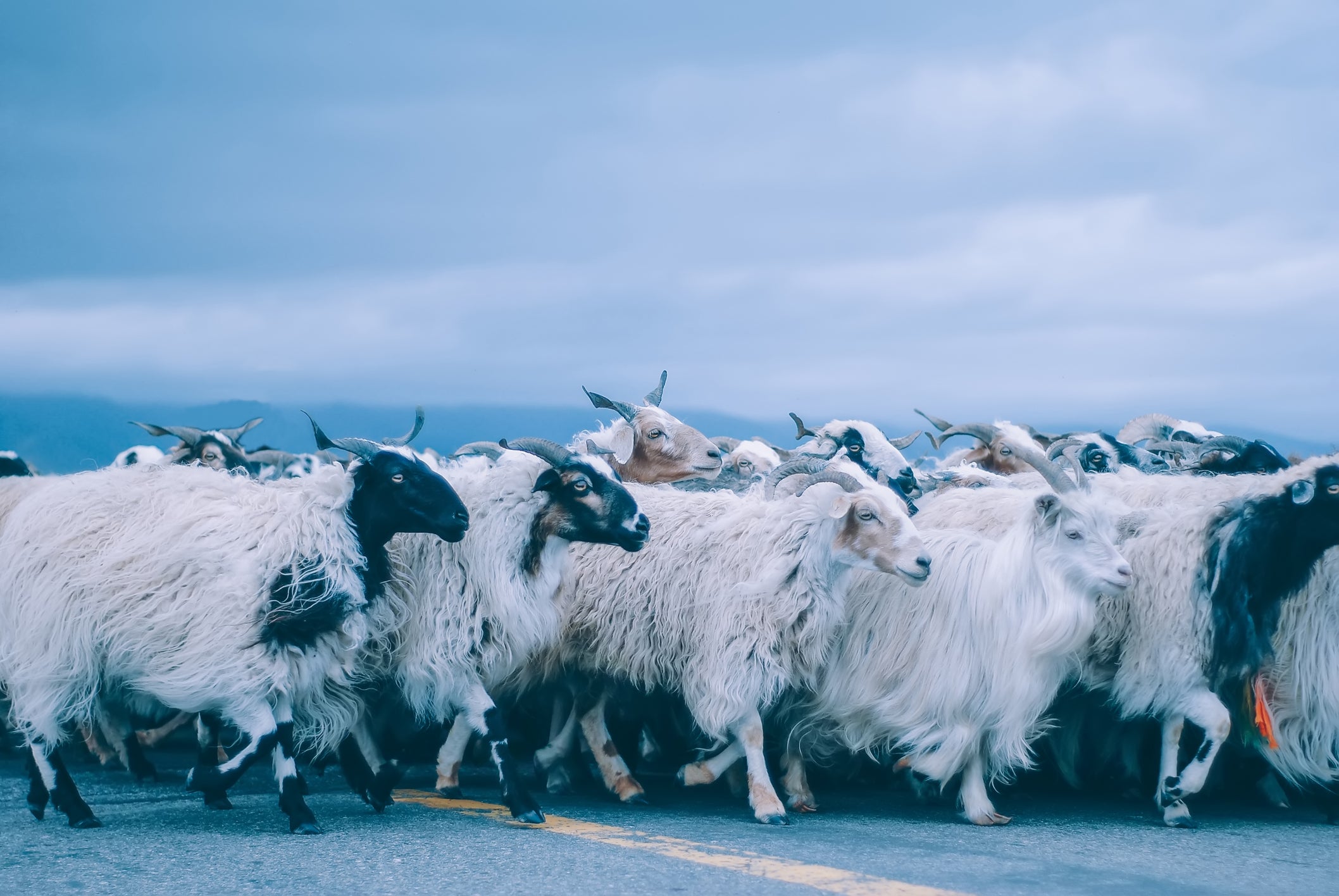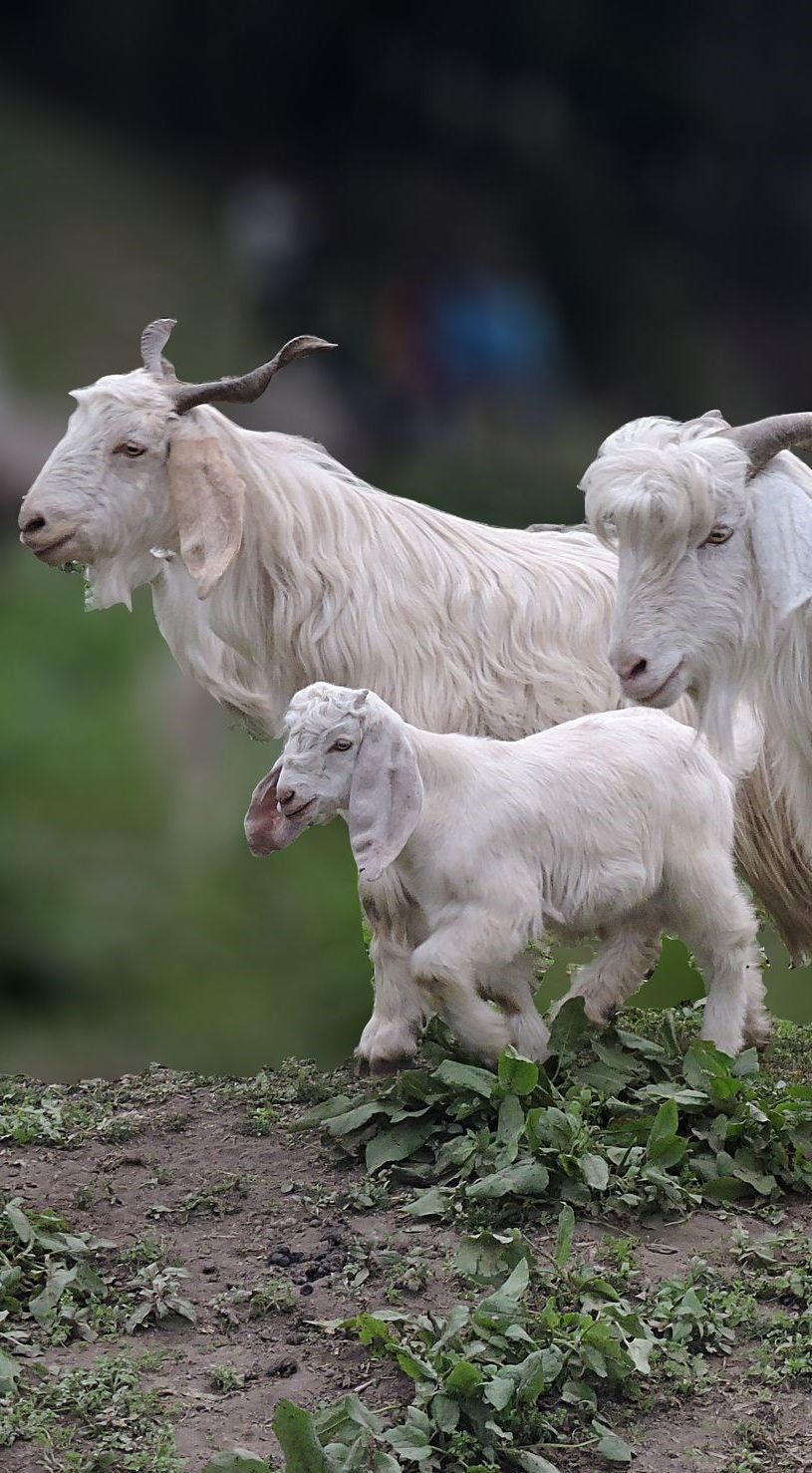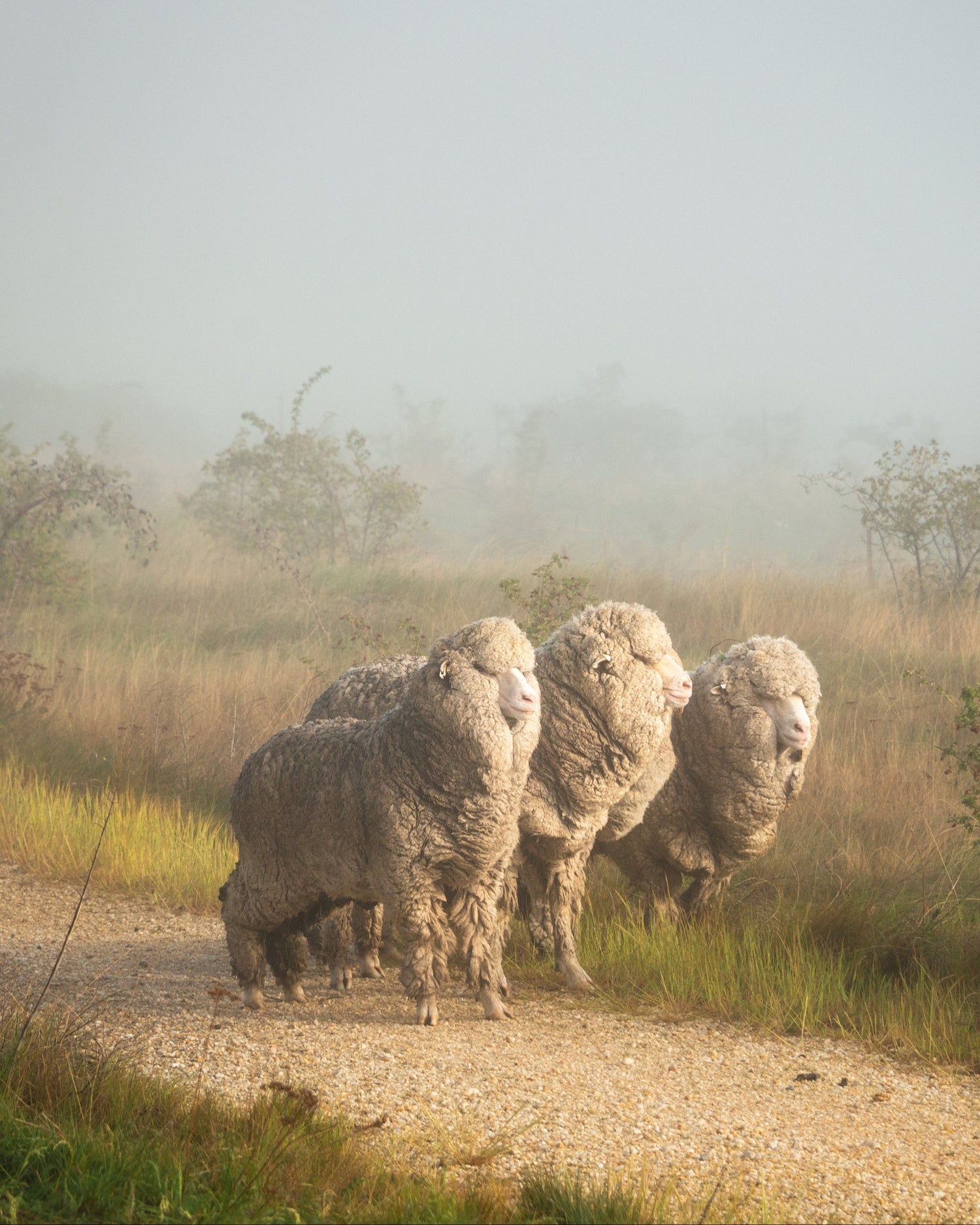
Cashmere & Merino
Cashmere and merino are the most precious and highest quality wool types. They keep you warm even at low temperatures, while offering featherlight and cozy wearing comfort. Both are long-lasting, adjust to your body temperature to keep you comfortable, and can be worn year-round.
Cashmere was once celebrated as a luxury item, but since its explosive growth in the 90s, it has found its way into fast fashion and even supermarkets. In such cases, it is often not high-quality Cashmere. This mass production leads to overconsumption, causing significant environmental damage and the exploitation of people and animals.
In the specific case of cashmere and merino, this means, many more goats to feed, more mouths to sustain, more land needed, and increased desertification as the land cannot recover in time. Overgrazing does not merely mean the goats (or sheep) are eating too many plants; it means they are overeating individual plants down to the root, which leads to a lack of biodiversity in certain areas. Additionally, their hooves damage the soil and grassroots, preventing regrowth. As a result, the animals and their keepers, gradually lose their native habitat.
The fashion industry is aware of these issues. Some brands are replacing fibres with recylced ones to satisfy the high demand.
We love fashion. But we don't want our clothes to exploit animals, people or destroy our planet.
Embracing slow fashion.

Cashmere
The softest wool, cashmere, comes from a specific type of goat knowed as the « Cashmere goat ».
These goats are commonly found in Mongolia, Tibet, Northern India, Afghanistan and southwest China. They can withstand temperatures as low as -30C°, thanks to their insulating undercoat. These goats are among the most expensive animals in the world. It takes about four to eight goats to produce enough cashmere for an adult sweater. In comparison, one sheep can produce enough wool for four wool jumpers.
To harvest the precious fibres, the goats are tipically combed by hand twice a year. The amount of cashmere a goat produces depends on its age, health, size and genetic background.
The combing process is often long, traumatic and painful for the goats, and farm workers are under pressure to collect as many fibres as possible in a short time.

Merino
Merino wool comes from a specific breed of sheep known as the « Merino Sheep ». This breed is commonly found in the higher elevated areas of New Zealand and Australia, known for extremly cold winters and extremly warm summers. During winter the sheep develop an extra layer of fur to protect against low temperatures, and during summer, their fur protects them from overheating.
You may have heard about mulesing, a practice associated with merino wool. Mulesing involves the removal of wool-bearing strips of skin from between the hind legs of sheep to prevent flystrike.
Some organisations guarantee the use of non mulesed-wool, to guide the global community towards more ethical materials production.
70% of the world's merino production comes from Australia, the only country in the world where mulesing is still practiced.
Behind every garment, there is a fibre; behind the fibre, there is an animal and its keeper. That's why we believe every item deserves to be treated with respect. This conviction drives what we do ♥
